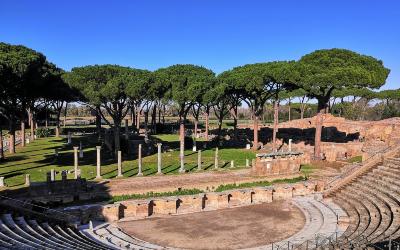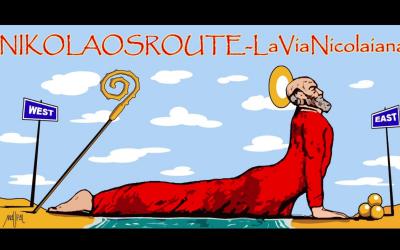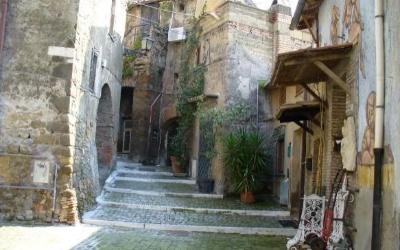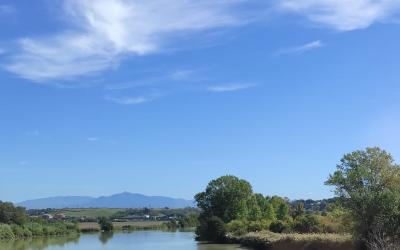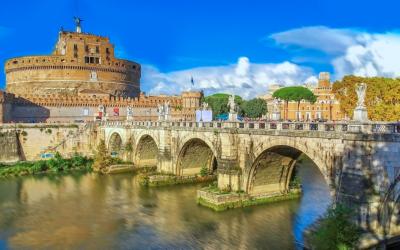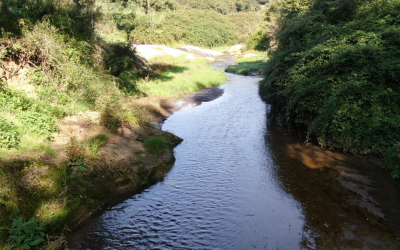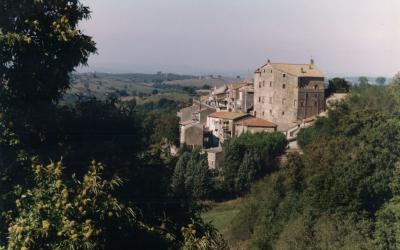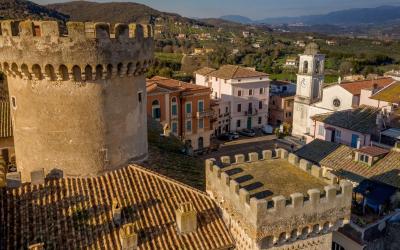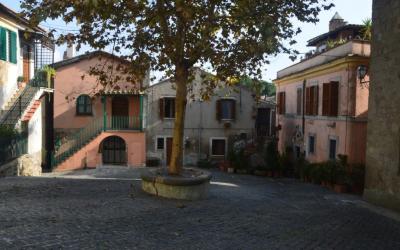Only a few kilometres from Rome city centre is Ostia, Rome’s terrace overlooking the sea.
The ideal destination for a regenerating dip, a fish dinner or a simple stroll amid nature, art and culture.
From the Via Ostiense, by car, train or bicycle along one of the cycle routes, Ostia Antica, with its characteristic Renaissance centre and the spectacular area of the Archaeological Park, is within easy reach. Just a short distance along the coast, stands the modern part of the town - Ostia Lido. Called simply Ostia by the 'locals', the Lido area originated from the great reclamation carried out in 1884 by labourers from Ravenna who tamed the malarial swamp; building expansion occurred in the 1920s and 1930s when it took the form of the seaside resort of Rome. Since then, Ostia has been the capital's terrace on the sea.
NOT TO BE MISSED
• The tour can start from the Borghetto dei Pescatori (Fishermen's Village), an early residential settlement of humble huts built in the late-19th century and rebuilt with two-storey buildings in the 1930s. Situated near the canal of the same name, it still retains the charm of a small seaside village.
All the houses are built around the square that houses the church dedicated to St Nicholas of Bari, patron saint of fishermen. To celebrate its seafaring identity, every year, at the end of August, the quarter takes on new life with the traditional Sagra delle Telline, small shellfish, typical of the area, served as a pasta sauce and enjoyed on makeshift tables, set up outdoors for the occasion.
• Continuing in the direction of the Marina, we find several bathing establishments along the seafront, including the historic 'Kursaal' and its monumental wheel. In addition to the classic facilities for spending a day at the beach, several have swimming pools and sports facilities as well as refreshment areas overlooking the sea.
• The 20th-century heart of the quarter is Piazza Regina Pacis, overlooked by the namesake church; a short distance away is the eclectic Palazzo del Governatorato, today the seat of Rome’s Municipality X, and the Palazzo della Posta, a typical example of the rationalist style of the 1930s.
• The richness of Ostia's architecture never ceases to amaze!
Heading towards the wide Piazzale Anco Marzio, where the Palazzo del Pappagallo (Parrot Building) stands out with its bright colours, we come across a number of pretty little villas and private residences that overlook the seafront in a harmonious alternation of styles and colours.
Between an ice-cream or an aperitif, the visitor should not miss a souvenir snapshot on the Ostia Pier: a 150-metre platform stretching out over the sea from which to enjoy the salt air and boundless blue views.
• To complete the itinerary, continue on as far as the new Ostia Marina, which features a large terrace for staging concerts, a convention hall and a commercial space, and the adjacent Idroscalo area, now redeveloped as a green area with the Pierpaolo Pasolini Literary Park. The memory of this Italian intellectual, so attached to this part of the city and its inhabitants, is present with one of the monuments dedicated to him, in Ostia, on the very site of his murder in 1975.
Near the park is Tor San Michele, designed by Michelangelo Buonarroti in brick. This once served as a lookout and control point.
MONUMENTS TO PASOLINI
- Memorial monument by Mario Rosati in Via dell'Idroscalo, at the site of the murder
- White marble stelae by Gaetano Gizzi in Piazza Gasparri
- Red marble stelae by Pietro Consagra in Piazza Anco Marzio
PIATTI TIPICI
- I primi della tradizione romana: carbonara, amatriciana, gricia, cacio e pepe.
- Il quinto quarto: pajata, coda alla vaccinara, coratella, trippa al sugo
- Pizza romana, sottile e croccante
- Supplì al telefono, con mozzarella filante
- Maritozzo con la panna e grattachecca
TRADITIONAL DISHES
- Pasta with tellinas or clams
- Fish fry
- Krapfen (doughnuts) (Bar Paglia)

